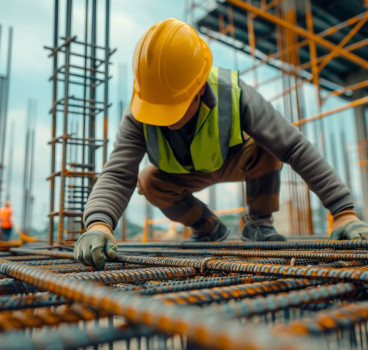Why Home Buyers Are Looking for Custom-Built Homes
Across the United States, more buyers want homes that fit how they actually live. They want spaces suited for remote work, aging parents, hobbies and storage. Many people are asking for more finishing and layout choices and customization capabilities. Custom builders provide defined options, clean scopes and a step-by-step path from idea to move-in.
Benefits of Custom Building a Home vs. Buying an Older Home
Custom builds give owners a clearer starting point. Energy systems are right-sized from day one. Floor plans place kitchens, baths and laundry where they make sense. Storage and flex rooms are already built in, so fewer walls need to be torn out later. Accessibility details, such as wider halls and curbless showers, are established during the framing process. Selections are made up front, which helps budgets stay on track.
Buyer sentiment helps explain the shift. A 2025 survey found that 12% see home ownership as a bad investment and 65% worry about the market because costs outpace incomes, pushing buyers to want increased clarity on value and scope. Meanwhile, custom building remains resilient. There were 34,000 custom starts recorded in the first quarter of 2025 and 181,000 over the last four quarters. For many buyers, that feels safer than bidding on an older home with unknowns behind the drywall or a layout that does not match their needs.
How Custom Builds Impact the Construction Industry
As speculative production slows down, custom work becomes more important. According to the National Association of Home Builders, custom home-building grew 4% in the second quarter of 2025, with market share near 19% of single-family starts — the highest since 2022. That means crews stay busy even when spec sales slow down. Contractors can plan for labor and materials better when they have clear scopes, locked selections and early purchase orders.
Timing is the other factor. From 2020 to early 2025, the median sales price jumped by almost $88,000, and construction timelines stretched. In 2024, 13% of single-family projects took more than 13 months to complete, which put pressure on scheduling and cash flow. The best custom home builders are those that can standardize options, issue clean takeoffs and communicate with vendors early.
5 Best Custom Home Builders in the U.S.
These five companies consistently satisfy buyers searching for the best custom builders in the country.
1. Keystone Custom Homes
Operating in Pennsylvania, Maryland and North Carolina, Keystone Custom Homes offers a large library of floor plans with structured choices that keep budgets and timelines on track. The My KeyChoices system offers predefined options per floor plan, enabling buyers and builders to align on selections early. Two Design Studios in Lancaster, PA, and Charlotte, NC, streamline the finish.
Keystone Custom Homes also runs an On Your Lot program for clients who already own land. Builders who serve buyers seeking the best custom home builders in North Carolina will find the company’s process-driven approach easy to coordinate across trades. Timelines and scopes are documented from the start, which helps subcontractors plan labor and keeps surprises to a minimum.
2. Schumacher Homes
Schumacher Homes focuses on build-on-your-lot delivery across multiple states with model homes and design studios that make budgeting and scope review straightforward. A free Design and Pricing Meeting provides itemized pricing, and each home includes a 10-year insured structural warranty. For professionals, that transparency helps uphold schedules and reduce change orders.
Model homes let buyers see room sizes and finishes before they decide, which reduces guesswork. Preconstruction checklists cover site preparations and utilities, so crews arrive ready to work.
3. America’s Home Place
America’s Home Place builds on the buyer’s land with a variety of adaptable house plans and numerous showrooms across a wide footprint. Its materials and standard features are documented by the market, which helps set expectations with subcontractors and clients. The company emphasizes tailoring plans to site conditions and buyer goals while keeping costs in view.
Local teams walk the lot to set the home for sun, access and drainage, which leads to fewer fixes later. Showroom staff lock in selections early, ensuring that purchase orders are sent out on time and schedules remain consistent.
4. G.J. Gardner Homes
G.J. Gardner Homes operates through local franchise builders with a deep design library and an emphasis on clear, all-inclusive pricing. The franchise model pairs local teams with national resources, which can streamline estimating, ordering and scheduling.
Each offer provides a single point of contact, so questions get answered fast and decisions move forward. Plans can be adjusted within set options to fit the lot and budget.
5. AR Homes
AR Homes is a luxury network with an extensive plan catalog, open model homes and strong visualization tools. For builders, the franchise model pairs local expertise with standardized design resources and client visualization, helping complex selections move faster.
Many markets offer furnished models, allowing clients to assess scale and craftsmanship in person. Digital tools help finalize choices before ordering.
The Bottom Line for Builders
Interest in custom builds is less about extravagant one-offs and more about homes that work. Builders that offer defined choices, reliable timelines and clear communication stand out. When done consistently, that approach earns trust fast, cuts rework and keeps the project pipeline full.
Additional Blogs

What Are Low-Carbon Concrete Options and How Are They Used?
Concrete is a staple product in the construction industry. However, its long-term use has proven just how much it's holding back the sector from minimizing its carbon footprint. You may have heard...
Read moreWhat the UK can learn from global construction tech leaders
The UK construction sector stands at a critical crossroads. Mounting pressures - stagnant productivity, acute labour shortages, tightening safety requirements, ambitious carbon-reduction targets and...
Read more

Are architects losing their influence in the digital era?
For decades, architects have been the central creative force in construction, shaping the buildings we see and the way projects are conceived, communicated and delivered. Their role has been...
Read more